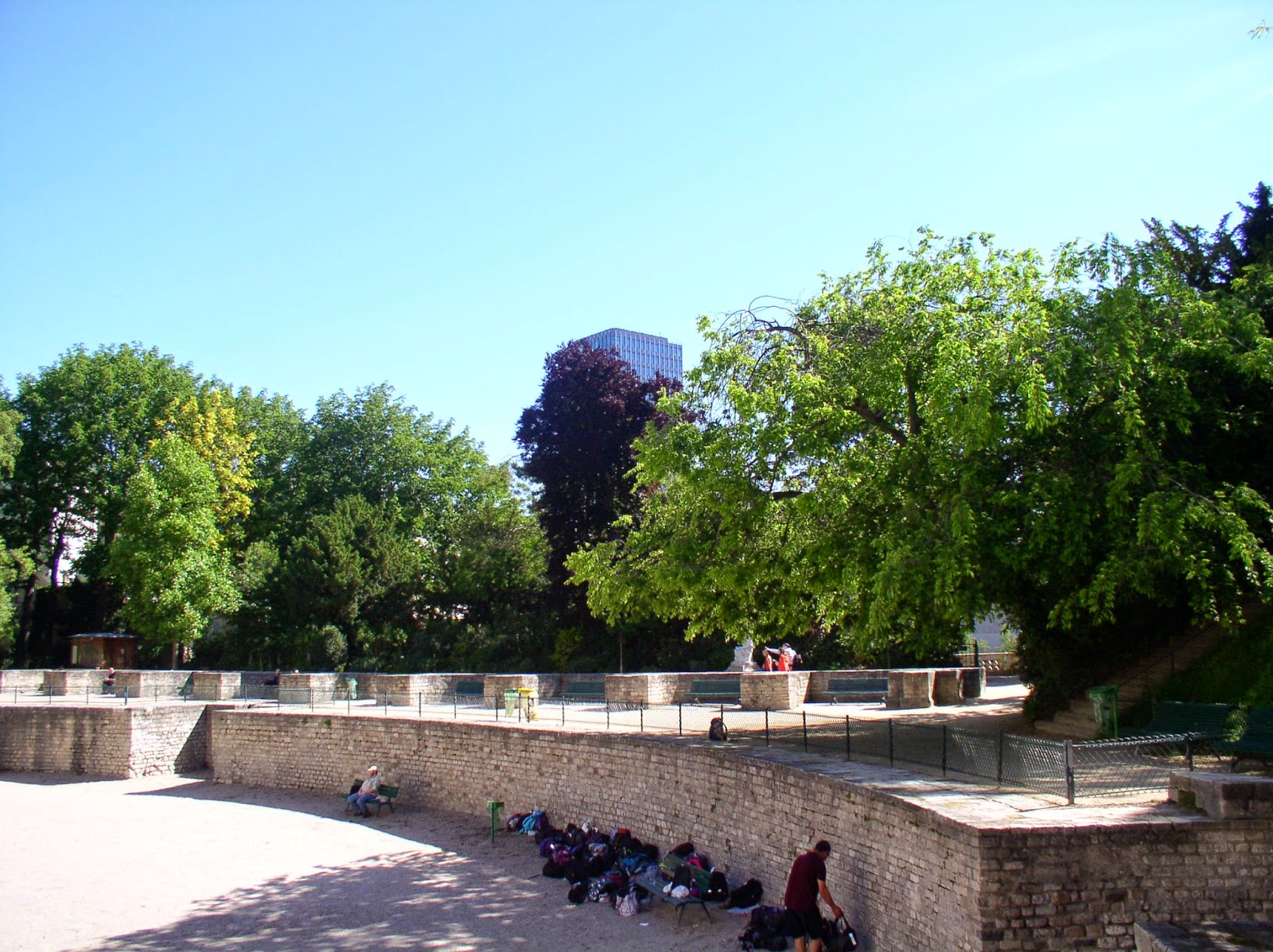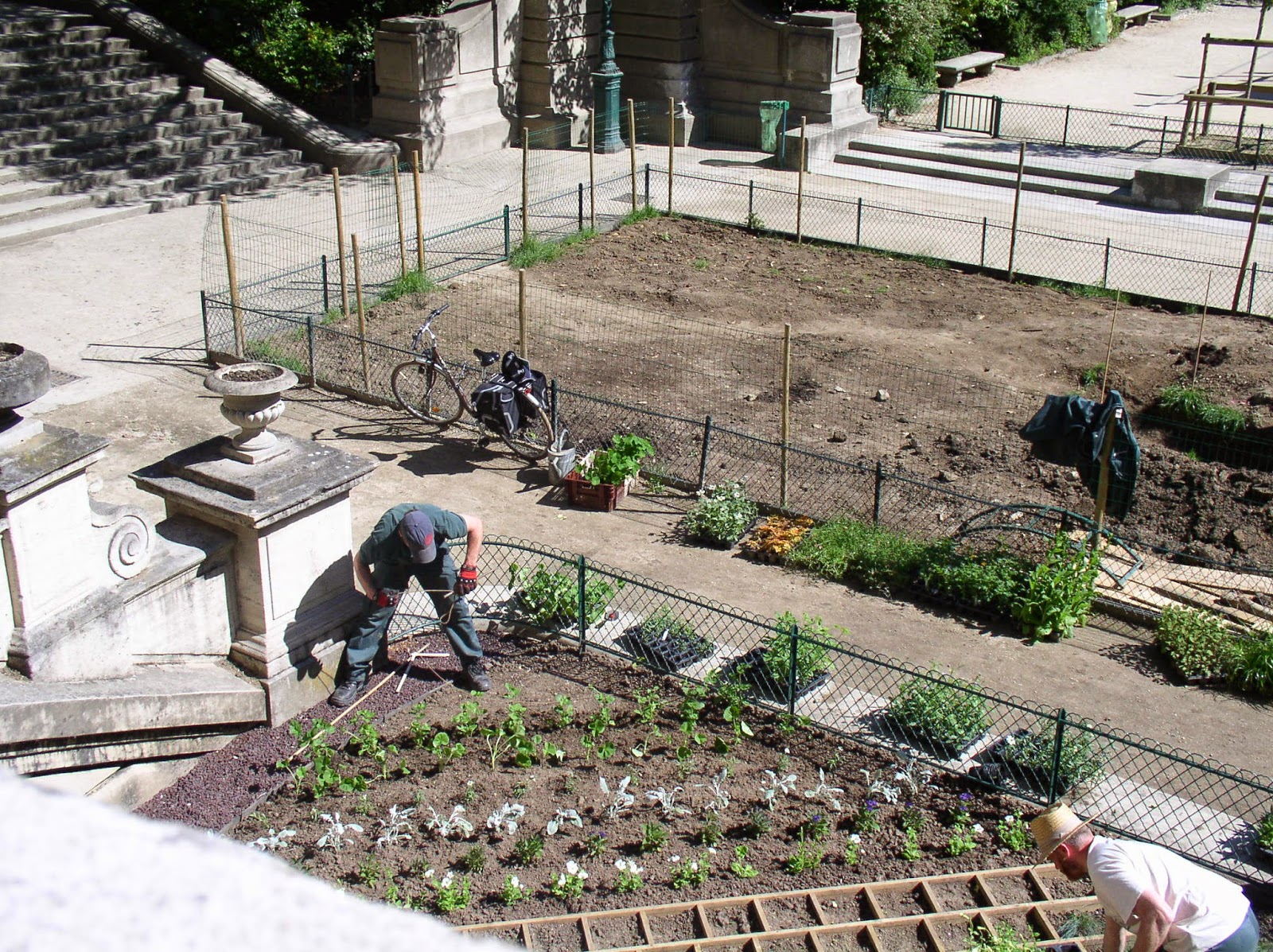The church of Saint-Étienne-du-Mont is located in the Latin Quarter on the Place Sainte Geneviève, just opposite the Panthéon. The church has a long and rich history that dates back to the very early days of Paris. It is dedicated to St. Stephen but more famously enshrines relics of the patron saint of Paris, St. Geneviève. It stands on the site of an abbey founded by Clovis I (466-511), King of the Franks, son of Childeric, and the first king to convert to Christianity. The abbey was later dedicated to St. Geneviève, who was so popular in the Middle Ages that the abbey had to be enlarged to accommodate all the pilgrims. Construction on the present abbey church began in 1492, and with many a start and stop, took nearly 130 years for the present church to reach completion in 1626.
From Place de la Contrescarpe, Saint-Étienne-du-Mont is a short walk on rue Descartes to rue Clovis. (In the other direction from Place de la Contrescarpe, rue Descartes becomes rue Mouffetard.) This view is the approach from the back of the church on rue Clovis.
“Eglise Saint Etienne du Mont/Begun under Francis I/Ended under Lovis XIII”
Upper half of the façade
Looking up at the spire
Saint Stephen is the sculpture to the left of the main entrance. The statue holds a palm branch in his hand, symbolizing a martyr’s triumph over physical death and has a stone next to his feet, a reference to the way the saint died. Saint Geneviève is the sculpture to the right of the entrance.
The sculpted tympanum (semi-circular wall surface over an entrance), the The Stoning of Saint Stephen, is the work of French sculptor, Gabriel-Jules Thomas. Saint Stephen (death c 34 AD) was the first Christian martyr, as described in the Acts of the Apostles. (The Acts of the Apostles is the fifth book of the new Testament; it tells of the founding of the Christian church and the spread of its message to the Roman empire.) Stephen had been appointed by the Apostles as a deacon whose job was to distribute food and charitable aid to poorer members of the community in the early church. He came into conflict with members of a local synagogue, who denounced him to the Sanhedrin (the Jewish court) for blasphemy. During his trial, he had a vision of Christ standing at the right hand of God, which infuriated the court, and a mob took him outside and stoned him to death.
FYI: In the movie “Midnight in Paris,” Owen Wilson was sitting on the steps to the side entrance of this church, when he saw the yellow 1920 Peugeot Landaulet that transported him back to the 1920s and the Paris of his dreams.
The interior of the church is 223 feet long. The nave contains five bays containing dedicated chapels. The chancel (area where the service is conducted) is surrounded by an ambulatory (aisled space around the altar.)
The wooden pulpit is on the right and the famous Rood Screen, one of the most unusual features of Saint-Étienne-du-Mont, spans the nave between the spiral staircases.
The decorative canopied wooden pulpit dates from 1651 and is supported by a muscular Samson with the jawbone of an ass in his hand and a slain lion at his feet.
The Rood Screen dramatically crosses the nave like a bridge and separates the choir, where the monks or canons sat, from the body of the church where the parishioners sat. This Rood Screen is the only one left in Paris. It is a tremendous work of craftsmanship which adds elegance to the interior.
The organ dates from 1633. Its organ case is a masterpiece of carving and an architectural element in its own right. Concerts are held in Saint-Étienne-du-Mont quite often.
Chapel of St. Geneviève
At the age of 15, Geneviève (422-512 AD) became a nun who was admired for her piety and devotion to works of charity. In 451, after Attila crossed the Rhine and neared Paris, Parisian citizens were ready to flee the city in terror. Geneviève told them that if they kept their faith in God, fasted, prayed and performed penance, the city would be protected by heaven, and their lives would be spared. It is claimed that the intercession of Geneviève's prayers caused Attila's army to go to Orléans instead of to Paris. In 464, she interceded with Childeric I (440-482) to allow her to bring grain to the blockaded city under siege and suffering famine and to show clemency to prisoners of war and the citizens of Paris. (Childeric was a Merovingian king and father of Clovis, who would unite the Franks and found the Merovingian dynasty, which ruled the region of Gaul for the next 300 years.)
The elaborate covering with a pointed arch, similar to a baldachin, rises above the glass and brass tomb containing St. Geneviève’s burial stone.
Tomb, chapel and reliquary are located on the southern side of the church.
A Reliquary containing a finger bone of St. Geneviève.
From the time of the early Christians, relics of the saints were believed to possess miracle-granting properties; the saints supposedly had the ability to intercede on behalf of humankind, so their relics were sought-after commodities.
Chapel of the Blessed Virgin
The entombment of Christ in the Chapel of the Sepulcher
From the time of the early Christians, relics of the saints were believed to possess miracle-granting properties; the saints supposedly had the ability to intercede on behalf of humankind, so their relics were sought-after commodities.
Chapel of the Blessed Virgin
Victor Baltard built the Catechism Chapel at the back of the church (reached through the sacristy) in the 1860s as an extension to the existing church. In the hallway are stained glass windows which illustrate Biblical stories.
The false god Baal being consumed by fire
The wedding at Cana and the crucifixion
The false god Baal being consumed by fire
The Garden of Eden with serpent
Noah and the Arc and the Church as a boat with Christ, the apostles and Church fathers
The altar in the Catechism Chapel




























































